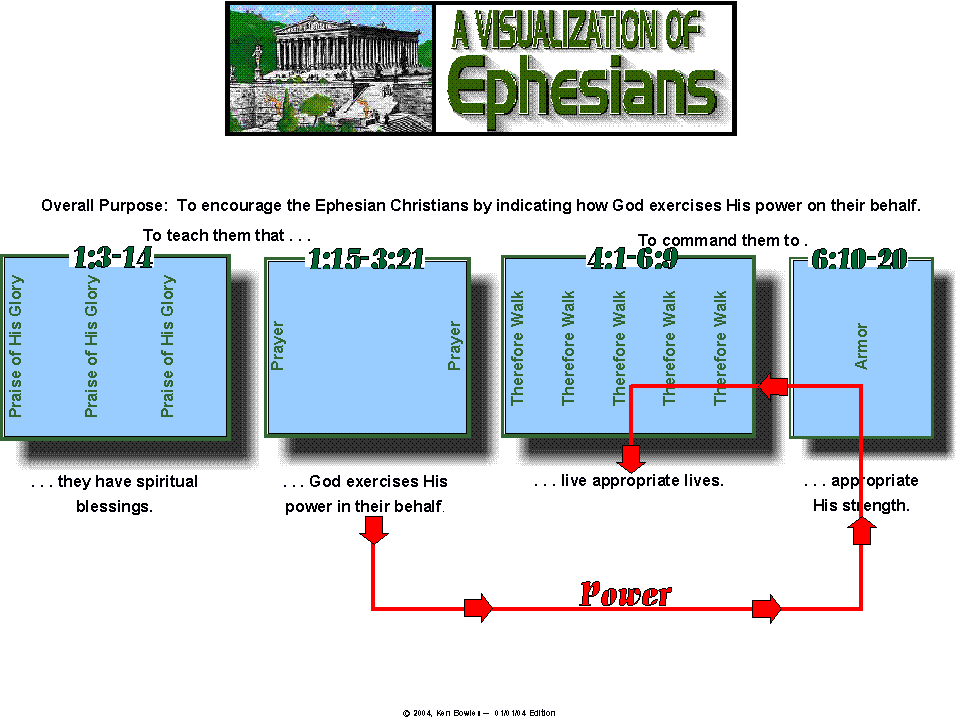

This visualization of Ephesians is designed to illustrate the argument flow through the epistle. The first major section is 1:3-14. It is divided into three parts by the repetition of this thought, "to the praise of His glory (verses 6a, 12b, 14b)." Each part is associated with a person of the Trinity. This section may imply that the power exercised by the Trinity to bless the readers with election, adoption, redemption, etc. is also available for use in living a godly life. The second section (1:15-3:21) refer to prayers that the Apostle Paul often prayed for the Ephesians. He bracketed the section with a beginning prayer (1:15-23) and ended it with a prayer (3:14-21). The topics of "love" and "power" are found in both prayers. He requested that God give them the power that would allow them to live godly lives (3:16-20). The doctrinal half of the epistle ends and the practical half begins. There are five walks in the third section of 4:1-6:9. The walks are Unity (4:1-16), Obedience (4:17-32), Imitation (5:1-6), Separation (5:7-14), and Circumspection (5:15-6:9). In the fifth walk, there are three specific relationships mentioned: Husband-Wife (5:22-33), Parents-Child (6:1-4), and Master-Slave (6:5-9). This section provides guidance on what a godly life should be like. The final section is the famous "Armor of God" passage in 6:10-20. The power that the Apostles prays would be available to the readers is made available to live the life of the five walks by putting on the elements of the final section. The girdle (6:14a) and the sword (6:17a) both refer to having an understanding of Scriptures. The breastplate (6:14b), the shoes (6:15), the shield (6:16), and the helmet (6:17a) all refer to the readers' salvation. Though not included in the armor, prayer (6:18-19) is also listed as a help.
 © 2004, Ken Bowles -- January 08, 2004, Edition
© 2004, Ken Bowles -- January 08, 2004, Edition
Click HERE to Return to the Ephesian Table of Contents.
Advertising is not endorsed.